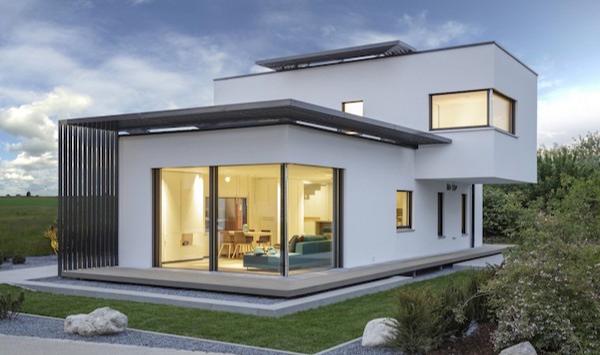The future of architecture has already arrived
Wednesday 31 August 2016, 10:14AM
631 views
Thanks to modern building technology, an energy-plus house generates more energy than its occupants require for a comfortable lifestyle. What seemed a remote vision of the future just a few decades ago has since moved from the realm of model projects into a practical possibility for anyone wanting to build a new home. And it’s become a pretty cosy place to live in as well.
The principle behind an energy-plus house is a simple one: it needs to produce as much energy as possible and consume as little as possible. The higher the ratio of produced to consumed energy is, the better the energy balance of the house. Over the last few years, the progress in this area has been absolutely sensational, reaching levels that were unthinkable as little as a decade ago.
How is a house able to generate energy? Two main sources of energy are exploited. Firstly, photovoltaic modules can be used to generate solar power. This power can be used within the house itself, stored in a battery or fed into the public grid. The second important energy source is ambient heat. Heat pumps can draw heat from the ambient air, the ground or the ground water and transfer it for use in heating the building or for warm water. A further method of generating renewable energy is solar thermal technology, which is also able to utilise the power of the sun for heating and warm water. Over the last few years, however, this particular technology has diminished in importance.
If energy has been produced efficiently, the house will have a substantial surplus on the production side of the energy equation. But maintaining a positive balance also means being as economical as possible on the consumption side. Energy-saving appliances help keep power consumption to a minimum, with the heating system being especially important in this regard. Energy-plus houses boast excellently insulated walls and windows, and the ventilation system even recovers heat from waste air before expelling it from the house.
To ensure that all these mechanisms are optimally aligned with each other, most energy-plus houses use an energy management system. When the sun is heating rooms too excessively, these systems lower the exterior blinds, thereby preventing the need for electrical cooling. And an energy management system can also switch on the washing machine at precisely those times when the photovoltaic modules are producing an abundance of free solar power. The aim is to maintain an ideal, comfortable indoor climate at all times.
Although this may all sound a little too technical to some people, the occupants don’t actually notice the technology in their day-to-day lives. What they definitely do notice, however, is the reduction in their annual energy bill – as well as the extremely affordable loans offered by KfW for houses that meet the bank’s new efficiency standard (known as KfW 40 Plus).
Source: www.haro.co.nz
